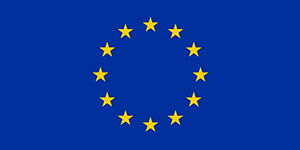Publishable summary:
Industrial symbiosis (IS) has gained great attention in the last years due to its high potential for energy and resources savings. CORALIS has been designed as a demonstration project for the generation of real experiences on the deployment of IS solutions and the overcoming of the barriers faced by these initiatives. The objective of CORALIS work package 2 is to characterize the current status and readiness level of the CORALIS demonstrators from the technical, economic and managerial perspective. Task 2-4 aims at profiling the IS interaction and the determination of success and deterrent factors. Two deliverables emerge from the CORALIS task 2-4. This deliverable 2.5 “Industrial symbiosis success and deterrent factors” summarizes the public part of the task 2-4 results. The generic results are presented here, e.g., definitions, barriers and drivers recorded in the literature. An overview of the results of the survey carried out with the demo/follower cases is also presented. Other task 2-4 activities listed in the proposal will be included in the task’s other deliverable 2.4.
This deliverable analyzes a multitude of definitions of IS, aiming at the delimitation of the terms relating to positive and negative factors that influence the implementation of IS. However, IS turns out to be a broad topic and understands itself as interdisciplinary. The essential aspect, the demarcation from usual economic activity, which also knows cooperation between companies or efficient use, cannot be derived from these definitions. Based on that, a large number of terms was found in the literature to denominate positive and negative factors for the implementation of IS. Since the individual positive and negative factors are difficult to separate from one another or dilute into one another, the terms generally remain ambiguous, but at least have sufficient explanatory power to clarify if they are positive or negative for IS.
In this deliverable, the positive and negative factors are named success factors and barriers, respectively. A chapter is provided for both, in which all factors are described in as much detail as possible. A categorization taxonomy was defined in the method section, as the dimensions of categorization are manifold and therefore not uniformly used in literature. It allows to allocate the barriers to six categories named economy; social/managerial/organizational; framework/regulation; technical; information and environment. For the success factors, another category named proximity was included, as spatial proximity is a special (positive) precondition for IS.
In order to evaluate the current status of the barriers and success factors from the perspective of the CORALIS demo/follower cases, an online survey was conducted among those CORALIS project partners that are directly involved in these. This deliverable includes generalizable empirical values only. The aim of the survey was to quantify the qualitatively listed success factors and barriers. From the seven CORALIS demo/follower cases involved, a total of 34 processable responses was received. The lack of statistical significance is the most important restriction to be mentioned; another limitation for generalizability is that CORALIS partners have achieved a level of awareness that probably goes beyond the level of usual companies. While literature argues that relevant barriers are found at the beginning, i.e. the process of initialization and raising awareness, these advanced partners state the most applicable barrier categories arise from the categories economic and framework. The inclusion of IS in the company strategy is clearly the best rated success factor, probably increasing internal motivation and initializing the search for partners.
To read the full document, click here.


